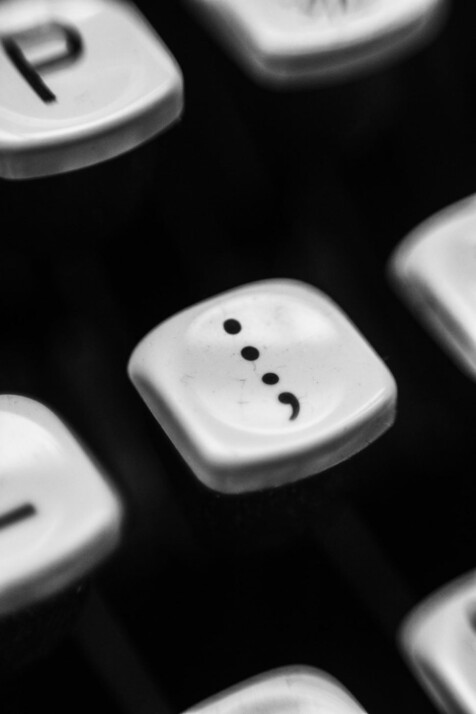English requires you to have enough knowledge in using basic English Symbols. Alongside an effective conveyance of your main idea, this concept is essential in making a successful output.
A List of Basic English Symbols

1. Period
A period is stricken when you want to end a sentence or a thought. Its purpose is simple when it comes to making a paragraph or long sentences. It shows ending and a beginning at the same time.
Although, if there’s no need to start a new sentence after a period, you don’t have to.
Make sure that when you put this at the end of a sentence, you have already completed its thought.
Suppose this section as a depiction of how to properly input a period.
2. Comma
A comma tells the reader that an introductory clause has ended, while the start of the main point has begun. Sometimes, it’s the other way around. It simply tells the reader about a sub-beginning or sub-ending within the sentence.
I want to go somewhere else, that’s why I went to the store.
However, the comma symbol can also appear when you’re trying to complement two clauses with one another. You can also put it after a clause or phrase that you want to put an emphasis with.
The President of the United States, the most powerful being on Earth, has arrived.
Or for clarity.
He woke up early, compared to yesterday, so he could go to the marathon on time.
3. Quotation Mark
Just as the name itself implies, the purpose of a quotation symbol is to indicate a statement made by a person.
The Judge said, “Let the convict serve his maximum sentence of 78 years without parole”.
Or to emphasize a certain term or proper noun.
The so-called “Thrilla in Manila” happened during a time when boxing was at its rise.
4. Colon
The purpose of a colon symbol is to provide emphasis to something.
He did not do anything that day, except for one thing: mourn.
To introduce a dialogue.
Meanwhile, they shouted: “For the poor!” as the riot police engaged them.
To enumerate.
My favorite food are as follows: chicken curry, rib eye steak, and beef shawarma.
Or clarify.
He named his book: “The Fall of Rising”.
Make sure to use uppercase for the first letter of the corresponding word after the colon.
5. Semi-Colon
The purpose of this symbol is to both indicate an end, but introduce continuity.
I will not run away from life’s misery; but I will make sure to succeed.
6. Question Mark
Its purpose is simple. This symbol shows an expression of inquiry.
Will you marry me?
7. Exclamation Mark
This symbol aims to relate with an extreme emotion which the author wishes to portray to the reader.
I saw the sign! It’s related to the end of time. Beware, oh unwary ones!
To Wrap Up
Now that you have read the examples on English symbols above, you finally learn new things about writing.
You now know what these basic symbols mean by reading the comprehensive list provided in this article. Make sure to take note of each example as a guide to your next writing endeavors.
Explore All Punctuation Articles
Do Complex Sentences Need Commas?
When dealing with multiple clauses in a complex sentence, you might ask yourself. Do complex sentences need commas? Supposedly, you’re…
Comma Vs Apostrophe: Know the Difference
One of the most essential components of a text includes punctuations. Given that, you should know the difference between comma…
Punctuation in Novel: Essential Tips and Advices
Punctuation in novels are writing’s unsung heroes. Is there a valid reason why semicolons, or any punctuation, should not be…
Basic Rules to Possessive Ending in S
How to make possessive ending in S or S-sounding words is a hotly discussed grammar topic. Stylebooks, grammarians, and elementary…
Ultimate Writing Guide: Closing Punctuation
Closing punctuation is any punctuation that indicates the end of something. Punctuation is a set of signs or symbols that…
Simple Usage: Braces Punctuation Guide
Most people don’t know what bracespunctuation is, but braces are simply symbols that we use to contain “extra information”. There…
